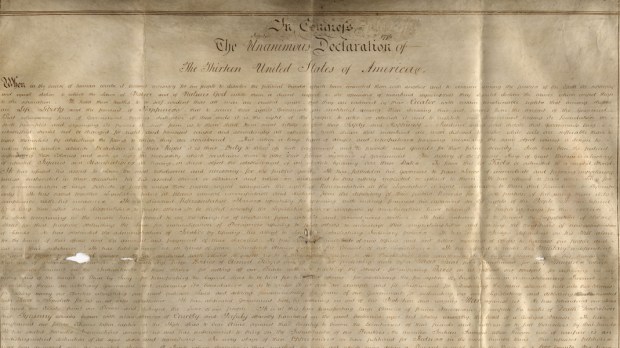Historians and scholars are abuzz at the discovery of a copy of the Declaration of Independence. This copy was handwritten on parchment, which immediately makes it stand out from previously found reproductions. Aside from the document displayed in the National Archive, this is the only other known copy on parchment.
There are several other small differences that have lead researchers Emily Sneff and Danielle Allen to new insight as to the mentality of the colonialists. According to The New York Times:
Some details of the text suggest that whoever created it had had access to congressional records, including the 1776 parchment. But it deviated from that parchment — along with every known 18th-century version of the Declaration — in one striking respect: the ordering of the 56 signatures. All known 18th-century iterations, Ms. Allen said, show the signatures grouped by state, with some printers even adding state labels. But here they were all jumbled. “I just kept staring at it,” she said. “There was no discernible order.” But then she labeled each name with the number of the column it appeared in on the 1776 parchment, and noticed that they alternated in a clear pattern — a pattern, she and Ms. Sneff argue, created with help from a well-known 18th-century cipher. That random order, Ms. Allen and Ms. Sneff argue, was meant to send a political message: The signers pledged “to each other our lives, our fortunes and our sacred honor,” as the last line puts it, as individuals, not as representatives of states. And that message, they argue, points to Wilson.
By “Wilson,” the researchers are referring to James Wilson, a lawyer from Pennsylvania and delegate to the Constitutional Convention of 1787 who was a strong nationalist — favoring a federal government (and its right to tax) over a loose confederacy of states. The researchers believe Wilson may have commissioned the copy and implanted the cipher to promote his position. The juggling act between federal power and states’ rights is an argument that still goes on today, as the Times points out.
The copy was discovered at West Sussex Records Office, in Chichester, England. The document was from the collection of Charles Lennox, 3rd Duke of Richmond, who was known as the “Radical Duke” for his pro-Colonial leanings.

